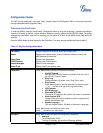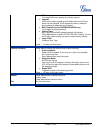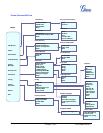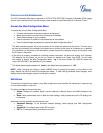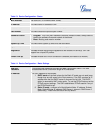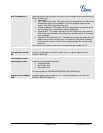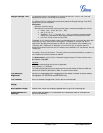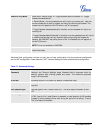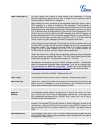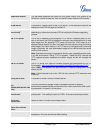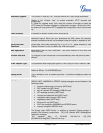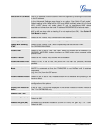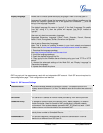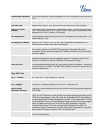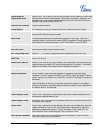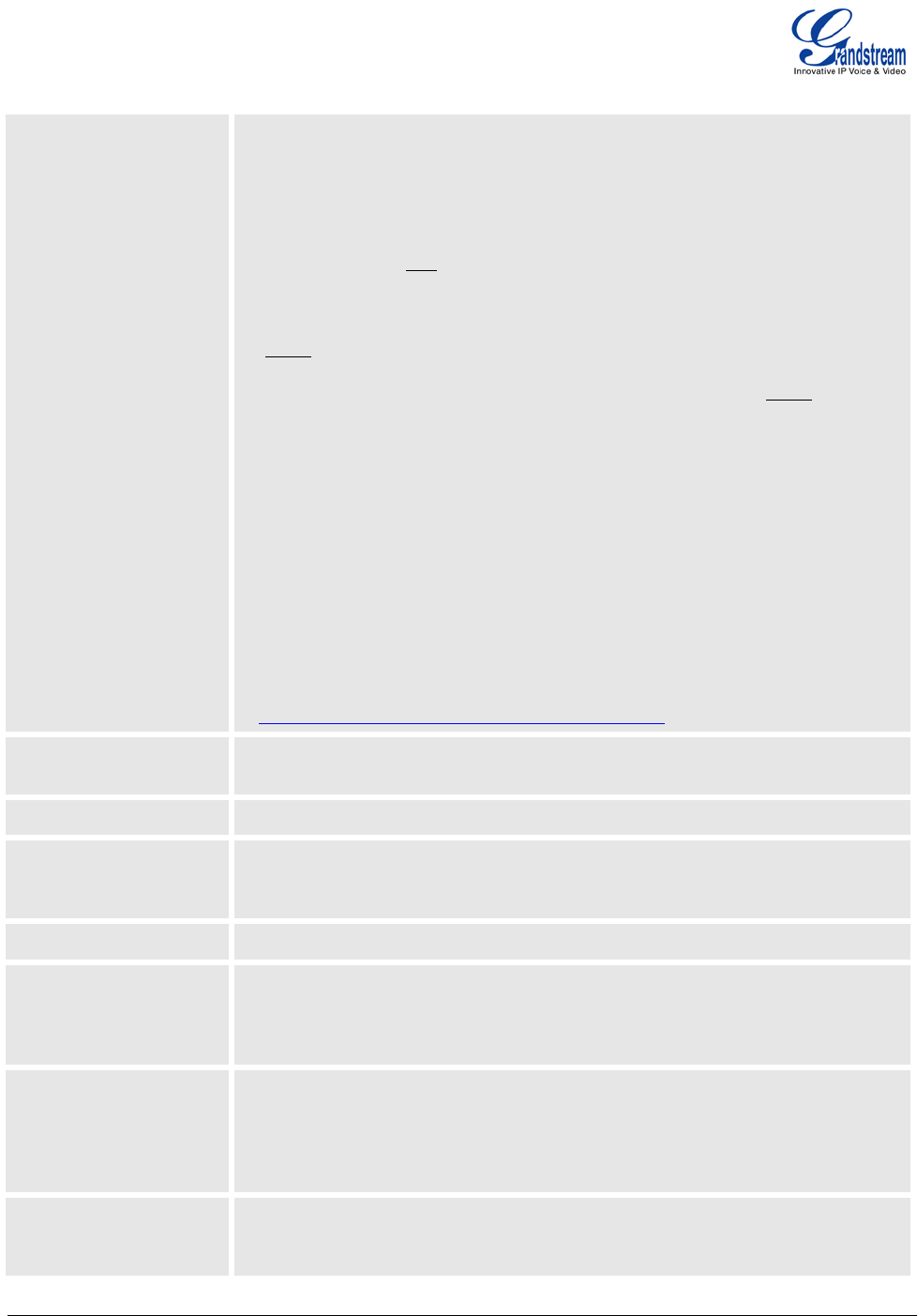
Grandstream Networks, Inc. GXP User Manual Page 32 of 44
Firmware 1.2.5.3 Last Updated: 03/2011
Voice Frames per TX
This field contains the number of voice frames to be transmitted in a single
Ethernet packet (be advise
d the IS limit is based on the maximum size of
Ethernet packet is 1500 byte (or 120kbps)).
When setting this value, be aware of the requested packet time (ptime, used in
SDP message) is a result of configuring this parameter. This parameter is
associated with the first
codec in the above codec Preference List or the actual
used payload type negotiated between the 2 conversation parties at run time.
E.g.
, if the first codec is configured as G.723 and the “Voice Frames per TX” is
set to 2, then the “ptime”
value in the SDP message of an INVITE request will
be 60ms because each G.723 voice frame contains 30ms of audio. Simi
larly, if
this field is set to 2 and the first codec is G.729 or G.711 or G.726, then the
“ptime” value in the SDP message of an INVITE request will be 20ms
.
If the configured voice frames per TX exceeds the maximum allowed value, the
IP phone will use and save the maximum allowed value for the corresponding
first codec choice. The maximum value for PCM is 10 (x10ms) frames; for
G.726, it i
s 20 (x10ms) frames; for G.723, it is 32 (x30ms) frames; for
G.729/G.728, 64 (x10ms) and 64 (x2.5ms) frames respectively.
Please be careful when editing these parameters. Adjusting these parameters
will also change the dynamic jitter buffer. The GXP has
a patent dynamic jitter
buffer handling algorithm. The jitter buffer range is 20 ~ 200 ms.
Grandstream recommends using the default settings provided. Grandstream
does not reco
mmend adjusting these parameters if you are an average user.
Incorrect settings will af
fect the voice quality. Please refer to the Codec FAQ
at http://www.grandstream.com/pdf/FAQ-Codec.pdf for more technical detail.
Layer 3 QoS
This field defines the layer 3 QoS parameter. It is the value used for IP
Precedence or Diff-Serv or MPLS. Default value is 48.
Layer 2 QoS
This contains the value used for layer 2 VLAN tag. Default setting is blank.
Data VLAN Tag
Default is 0. Enabling the Data VLAN filtering will help reduce the load on the
phone, but it isn’t necessary in most environments. This is
primarily for VLAN
filtering where tagged traffic will be forwarded to the DSP.
No Key Entry Timeout
Default is 4 seconds.
Use # as
Dial Key
This parameter allows users to configure the “#” key as the “Send” (or “Dial”)
key. If set to “Yes”, the “#” key will immediately send the call. In this case, this
key is essentially equiva
lent to the “(Re)Dial” key. If set to “No”, the “#” key is
included as part of the dial string.
Local RTP port
This parameter defines the starting local RTP-RTCP port pair used to listen and
trans
mit. It is the base RTP port for channel 0. When configured, channel 0 will
use this port _value for RTP and the port_value+1 for its RTCP; channel 1 wil
l
use port_value+2 for RTP and port_value+3 for its RTCP. The default value is
5004.
Use Random Port
This parameter, when set to “Yes”, will force random generation of both the local
SIP and RTP ports. This is usually necessary when multiple GXPs are behi
nd
the same NAT. Default is No.



